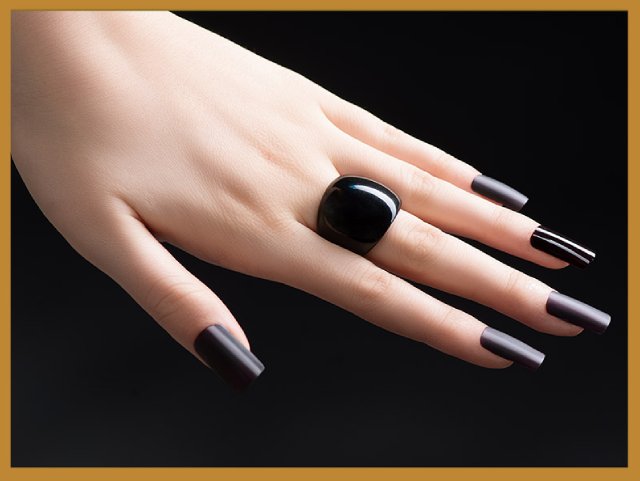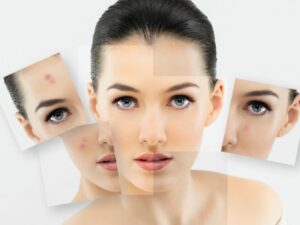Modern grooming is considered incomplete unless you have a perfect set of 20 beautiful nails, and that goes for men too! Moreover, your nails can reveal a lot about your body and your health, if you can learn how to read the signs. Read on to know more.
How would one define healthy and beautiful nails? Beautiful nails are smooth, without pits or curving, have uniform pale pink color, and are strong and resistant to easy breakage. The skin around the nail is healthy, without any pain, flaking or discoloration.
So how does one achieve that? Let’s begin with the basics. What is the correct method of caring for one’s nails? Start by trimming your nails neatly and regularly. Trim them straight and not curved, especially the toe nails, as close trims at the corners can ingrow and turn painful. Use a nail file to smoothen out the cut edges, then sterilize the nail file in hot water after each use. You can give yourself a basic manicure at home by dipping your hands in warm water for 10 minutes, then soaking your hands in olive oil for 10 minutes, then applying petroleum jelly to your cuticles before trimming them with a cuticle cutter. Do not trim your cuticles more frequently than say, once a month. Then use a nail buffer (available easily at all beauty stores) to give your nails that smooth shiny look.
Do not share your nail grooming equipment with anyone else if you want to keep your nails free from infections. And always sterilize your equipment using spirit or hot water, after each use. Use hand gloves while doing the dishes or using a mop. And use hand and foot creams (which also double as nail creams) twice a day at least. I generally advise women to complete all their household chores in one long stretch, have a shower and then use hand cream as soon as they step out of the shower. Reapply once more at bed time. Do NOT bite or chew on your nails or peel off the skin around your nails.
Always use a base coat before painting your nails. This protects your nails from the chemicals and dye used in nail paints, which could turn your nails yellow. Acetone based nail polish removers are freely available and are used most commonly by most women. However they can dry your nails out and leave them brittle. If you are allergic to the acetone, you could have itching, redness or peeling of skin around your nails. Look for “acetone free nail polish remover”. These generally contain “acetates” which work just as well. minus the nasty side effects!
Do our nails need any special nutritional care? A healthy balanced diet will provide adequate nutrition to your nails as well. However, if your nails are thin and brittle, then increase your intake of proteins and iron rich food. Consult a physician to rule out underlying medical conditions like anemia or a sluggish thyroid gland. Take a 10 mg tablet of Biotin everyday as a nutritional supplement. Biotin is a vitamin which is essential for healthy hair and nails, and is naturally available in raw egg yolk, liver, Brewer’s yeast and soybeans. None of the naturally available food items are a rich source of Biotin, so most of u will require Biotin supplements from time to time.
If you love using artificial nails, you need to be more diligent when it comes to nail care and maintenance. Do not use artificial nails to cover up a diseased nail. This is not a solution. Consult a dermatologist to have your nail treated, before considering artificial nails. Try wearing only one nail at first, to test for skin allergies. These manifest as redness and peeling of the skin on the nails folds. Care for your acrylic nails like you would care for your real nails. Clean them every day and check regularly to see if they’re coming loose or breaking. Only use glue made especially for acrylic nails. Stay away from detergents, and let your natural nails breathe every 2 months. Return to the salon for maintenance by an experienced nail technician every 3 weeks. It is wise to get artificial nails removed at the salon rather than home, to minimize damage to your natural nails.
If you have used artificial nails for several months, your natural nail may appear stunted, brittle and dry. If you decide to go back to your natural nails, then follow the nail care instructions mentioned earlier to help nurture your nails back to health. Do not paint your nails for a while. Use only ridge fillers or base coat, preferably one containing nail strengthening agents. If there is any pain or discoloration in the nail, then your nail might be infected. Consult a dermatologist and get the infection treated.
A lot of folks ask me about the little white spots they see on their nails. The medical name for this is ‘Onycholysis’. In simple terms, this occurs when your nail plate (what you trim every week) separates from the nail bed (the skin tissue underneath the nail) in a spontaneous and painless manner. This is most likely a result of trauma from chemicals like detergents, nail polish remover, artificial nails. or just digging your nails into hard surfaces! Pregnancy, anemia and nutritional deficiency can also cause onycholysis. The severe cases are generally linked to skin diseases. Fungal infections look very similar in some cases, so you’ll have to meet a dermatologist for confirmation. In true onycholysis, there is no treatment. Just trim what you can. In milder cases, it goes away on its own as the nail continues to grow.
Now what are those annoying and painful little slivers of torn skin by the side or bottom of your nail? These are called ‘hang nails’. These are also a result of trauma, dryness or irritation. People with nervous or fretful disposition tend to create these hang nails by biting or picking on it. These can be very painful and prone to infection, especially in mommies who wash dirty dishes and change soiled nappies. If you are a neat freaks who washes your hands with disinfectants or hand washes several times a day, then you’ll invariably end up with hang nails. Do not pick on it or tear it. Snip it with a cuticle cutter. Liberal use of urea or squalene containing hand creams (like the Neutrogena Norwegian Hand Formula) helps in prevention. Hand creams tend to stay back on your skin even after washing and towelling dry.
Your nails can tell a lot about you- your habits, your personality, even underlying medical conditions.
Pale nails = Anemia,
Spoon-shapednails = severe anemia and malnutrition,
Yellow and brown discoloration = Fungal infection,
Black streak = possible Melanoma,
Green discoloration = serious Fungal or Bacterial infection,
White speck on nail = Trauma,
White nails = Liver disease,
Brittle nails = Thyroid disease,
Bluish tint = Heart and/or Lung disease,
Half white and half pink nails = Kidney disease,
Shiny nails = long standing itchy skin disorder,
Gnawed nails = anxiety, perhaps obsessive compulsive disorder,
Callus on the index finger just below the nail = Bulemia.
There are plenty of skin disorders as well which cause nail deformities. By the way, did you know that dermatologists are trained in the diagnosis and treatment of nail disorders as well?




